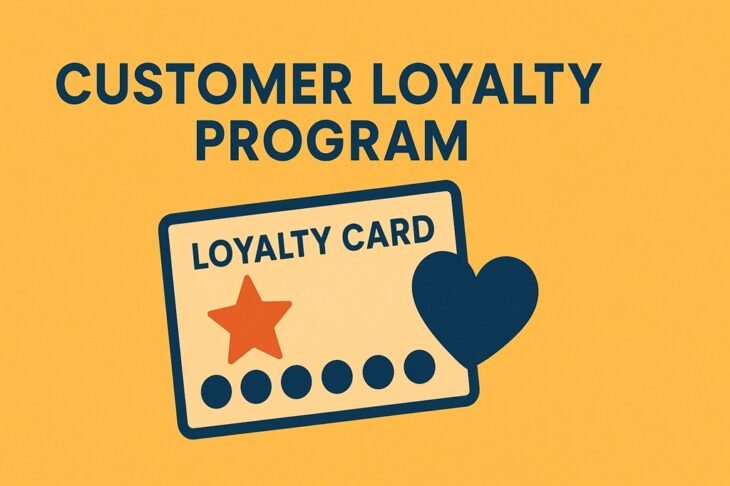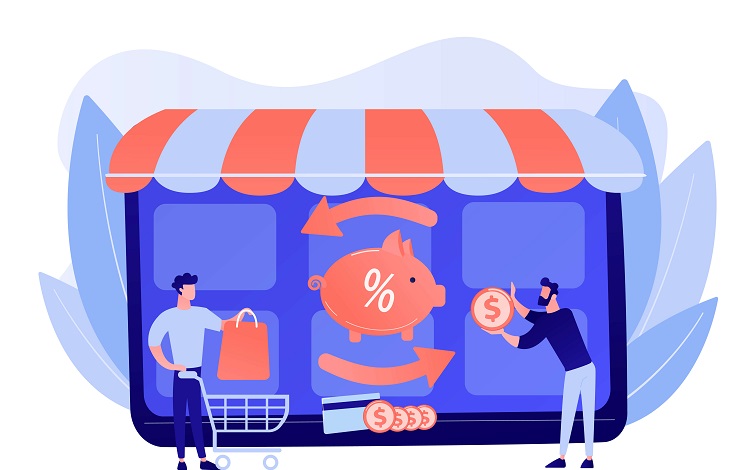Customer retention refers to how well a business keeps its existing customers over time, while loyalty measures how committed customers are to a brand or company.
In today’s competitive market, these two elements are critical for long-term success.
Key performance indicators such as customer retention rate, churn rate, and customer lifetime value (CLV) reveal how effective a business is at keeping customers engaged and coming back.
Table of Contents
Toggle1. Deliver an Exceptional Customer Experience

Consistency and customization keep customers coming back. Adjusting experiences based on prior behavior shows awareness and effort.
People now expect brands to remember their preferences and make future shopping easier.
Fast, friendly assistance, especially through live chat and omnichannel platforms, raises satisfaction. Strong support services build emotional bonds and reduce irritation.
A fast-responding customer service would be mentioned as a standout strength in any area, whether it’s a sportsbook review or a retail shop feedback.
Smooth digital environments also matter. When websites and mobile apps work flawlessly, repeat visits increase.
Friction, on the other hand, leads to abandoned carts and canceled transactions.
Key experience drivers include:
- Personalized interactions using customer data
- Real-time help through chat and multi-channel tools
- Seamless online and mobile navigation
2. Create a Customer Loyalty Program

Well-structured loyalty programs help maintain engagement and fuel repeat purchases.
Point systems, tiered perks, and exclusive offers give customers reasons to return.
Nerdy Nuts serves as a great example. Their system grants welcome points to new buyers and rewards frequent shoppers with ongoing incentives.
Such efforts extend the customer relationship and strengthen brand familiarity.
Essential elements of strong loyalty programs:
- Points accumulation
- Tier-based rewards
- Early access and exclusive offers
3. Leverage Email Marketing & Automation

Emails keep engagement alive after the sale. Thank-you notes, order confirmations, and personalized product suggestions help customers feel remembered.
Automation ensures timing and relevance without added labor.
Targeted campaigns work well to bring back those who’ve gone inactive.
Email education series also boost user knowledge and encourage better use of products.
Automation boosts efficiency and scale. Employees can then focus on higher-level service or strategy.
Smart email strategies include:
- Post-purchase thank-yous
- Product recommendations based on history
- Win-back emails for inactive users
- Automated learning series
4. Offer Proactive and Personalized Support
Customer support works best when it anticipates needs. Tools like Zendesk Agent Workspace give teams full visibility into past issues, allowing them to provide tailored and immediate help.
Analytics can flag potential issues before customers even reach out. By acting ahead of time, brands remove frustration before it begins.
Owning mistakes and correcting them quickly leads to stronger relationships. Customers who witness fast recovery often leave with more trust than before.
Key components of proactive support:
- Full-view service platforms
- Predictive help based on behavior
- Fast, clear resolutions when errors occur
5. Enable Subscriptions & Repeat Orders

Subscription models keep revenue steady and reduce decision-making for the buyer. Automated repeat orders help customers avoid running out of essentials.
Well-timed product reminders or bundled items make it easy to restock. Splash Wines, for example, used subscriptions during Black Friday Cyber Monday (BFCM) to boost convenience and retention.
Best practices for recurring services:
- Auto-renewing order setups
- Timely refill reminders
- Product bundles for added value
6. Gamify the Customer Experience
Adding a layer of fun strengthens the emotional connection. Customers engage more when brands make loyalty feel like progress or play.
Badges, milestones, and leaderboards spark motivation. Shoppers feel appreciated when progress gets recognized and rewarded.
Gamification tools to consider:
- Milestone celebrations
- Achievement badges
- Community leaderboards
7. Turn Customer Feedback into Action
Feedback shows where to improve. Surveys and Net Promoter Score (NPS) provide a clear view of satisfaction and concern areas.
Breaking feedback into customer segments helps with targeted upgrades. New buyers may need more onboarding, while long-term users might crave exclusive benefits.
Acting on suggestions reinforces trust. People want to see that their voice makes a difference.
Effective feedback tools include:
- Post-purchase surveys
- NPS tracking
- Segmented analysis by customer type
- Follow-up emails outlining improvements
8. Incentivize Referrals and Word-of-Mouth
Satisfied customers often become a brand’s best promoters. Offering rewards to both the referrer and their friend increases participation.
Referral programs often bring in high-quality leads because trust already exists between friends. Dia & Co grew significantly through a social-first referral structure that rewarded sharing.
Strong referral incentives include:
- Discounts or bonuses for both parties
- Easy sharing options via email or social platforms
- Clear instructions and fast reward delivery
The Business Case for Customer Loyalty
Retaining existing customers often brings more value than acquiring new ones.
A study by Bain & Company found that improving customer retention by just 5% can increase profits by 25% to 95%. Loyal customers typically spend more, refer others, and cost less to serve.
Acquiring a new customer is often five times more expensive than retaining an existing one. That gap widens as marketing costs rise. Loyal buyers tend to make frequent purchases and bring in more revenue over time, significantly raising their lifetime value.
They’re also more forgiving of minor errors, making them more sustainable assets in the long run.
Businesses investing in loyalty experience higher growth and profitability, making customer-focused strategies a must-have in any growth plan.
Key Metrics to Monitor
Evaluating loyalty requires attention to the right data. Customer Retention Rate (CRR) tells how well a company holds onto its customers during a given period. A high CRR indicates satisfaction and value alignment.
Churn Rate reveals how many customers stop purchasing or unsubscribe. High churn can point to service gaps or unmet expectations.
Repeat Customer Rate shows how many individuals return for another purchase. This metric signals how effectively a business builds trust.
Customer Lifetime Value (CLV) estimates the revenue generated by a customer throughout their engagement with the brand. A growing CLV suggests improved retention strategies.
Purchase Frequency and Average Order Value also matter. Together, they paint a picture of buying behavior and spending habits, helping businesses tailor their approaches.
Supporting Tactics That Reinforce Retention
Some tactics work behind the scenes but make a big difference. Easy returns and exchanges reduce purchase hesitation and encourage repeat buying.
Fast checkout processes and smooth transitions from guest to account holder improve the experience. When customers don’t need to enter their details repeatedly, they’re more likely to come back.
Social responsibility, brand transparency, and shared values create emotional loyalty. Customers increasingly support businesses that align with their ethics.
Flexible payment options, like Buy Now Pay Later, remove financial barriers and increase average order value.
Creating a unified customer profile across all channels allows businesses to deliver consistent, relevant experiences every time.
The Bottom Line
Customer loyalty requires a long-term mindset. No single strategy delivers success overnight.
Businesses must commit to refining the customer experience, using data to measure impact, and maintaining a culture that prioritizes customer satisfaction.
Sustained loyalty translates into consistent revenue, enthusiastic referrals, lower acquisition costs, and improved retention metrics.

